Cupar Golf Club - One man went to mow!
Cupar Golf Club is reckoned to be the oldest 9-hole course in the world. It occupies a stunning position on Hill of Tarvit in the Kingdom of Fife, just a few kilometres west of St Andrews. Pitchcare caught up with the club's only greenkeeper, Gary Douglas, to find out how he occupies his time!
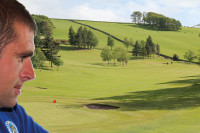
Cupar Golf Club is believed to be the oldest 9-hole club in the world, being instituted on 7th November 1855. The original course was on private property at Tailabout farm, where the tenant had given members permission to 'exercise' twice a week. This course was laid out by the celebrated Alan Robertson of St Andrews. The club played at Tailabout for twenty-one years, but failed to agree terms with the tenant so, for a short period of time, moved to and played over a rather primitive course at Springfield House (now Kinloss), a mile west of Cupar.
The new course opened at Annsmuir by Ladybank and the remnants of the Cupar club migrated there, but still preserved their identity. As Annsmuir became more attractive, the number of Cupar golfers began to increase. The members of the club, around the 1890s, wanted a course nearer to home so, to this day, Cupar now play at their present site on Hill of Tarvit on the south side of the town, just ten miles west of St Andrews. It has nine scenic holes on alternative tees and more 'weather' than any one man should have to contend with!
That man is Gary Douglas who is the club's Head Greenkeeper. In truth, he is the only greenkeeper but, as he explains in this question and answer session, he has volunteers to assist him, some from unlikely quarters!
Pitchcare: Tell us a bit about your role.

Being a small club I don't have the luxury of agronomists or contractors, but I get good service from Kenny Liddle from Turf Amenity Solutions who carries out my soil testing on my greens and gives me advice on the way forward regarding selecting the appropriate products.
I try to do all the basic servicing and repairs myself. Anything major I usually use Double A Trading, the local John Deere dealer, who are just down the road; their service is good. I have other contacts at other places I have worked with in the past, and they do some of my sharpening for me.
How did you get into the industry and where did you work prior to your current position?
I was a keen golfer during my school days and that played a part. I was never going to be a pro, so I went for the next best thing - greenkeeping! I did a couple of summer jobs at Cupar under Trevor Harris, who is now at the Castle Course in St Andrews. He gave me an insight into the job during my school holidays, even if it was just raking bunkers! Neil Ballingall gave me my first full time position at Fairmont, St Andrews and I learnt a lot from him and his team. I'd also worked at Ladybank and Piperdam, from where I came to Cupar.
I was fortunate to have Elmwood College on my doorstep. I came out of Bell Baxter High School and started my NC full time. Through the years, I have completed my SVQ level 2 and 3 in sports turf, HNC in golf course management, SVQ level 4 in management, as well as my Pa1, Pa2 and Pa6 certificates.
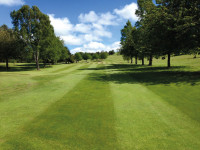
It's a 9-hole parkland course on the side of a hill. The course has matured well over the years and is well tended. The greens are relatively small push-ups cut into the side of the hill. Overall length is 5153 yards off our medal tees, with a par of 68.
Holes 1,2,3,4 and 9 are on the 'flat' part of the course, whereas 5, 6, 7 and 8 are on the hill itself. Our bottom four holes are used a lot during junior fun days and tuition days.
Who sets the greenkeeping budget?
We are a small club, run by a committee of volunteers. I was fortunate enough to be asked to act as greens convenor, so this allows me to present the committee with a budget, after consultation with my small sub-committee group. I usually submit a budget for the full calendar year to include machinery purchases and requirements for the course.
How would you describe the soil profile?
The soil type varies across the course. At the top, there tends to be less soil and more stony material (steep areas). At the bottom of the course there is a lot more soil content. Over the years the soil has moved, due to gravity, and we have now found that there is more organic content at the lowest part of the course. Surface run-off also causes the soil movement. In some parts of the course, the shaded areas around the wooded area (Ceres Woods) can remain wet for some time, especially through the winter months. A lack of sunlight and daylight can cause this, and they can also remain frozen for some time during winter. The soil is a quite heavy clay in some areas.
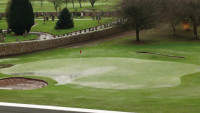
We do have some issues with shade and airflow to some greens which can lead to moss problems. These greens are irrigated less to reduce moisture build up. Basic aeration goes a long way to helping with drainage problems. This takes place as much as possible to keep the soil structure open, which helps root development as they struggle to compete in the heavy soil. It also help any fine grasses we do actually have.
Regular topdressing will help to dilute any thatch build up as well as trying to improve soil structure and drainage. In the winter, greens are prone to going soft, so regular topdressing will help firm up the playing surfaces.
Generally, the course drains well and we try and encourage golfers to spread the wear around the place by putting up traffic restrictions around the course. We do not allow buggies on the course due to the health and safety concerns from being on the side of a hill. We allow trolleys, but we put restrictions in place around greens to protect these areas.
How were the greens and tees constructed?
Both are push-up type design, built with the native soil. We do get topsoil from the local area if there are any building sites looking to dispose of it, providing it's not full of rubbish. That way, it doesn't cost us anything. This allows me to use it for future projects.

We are quite fortunate to have an irrigation system to the greens. Not many 9-hole courses can afford this. The system was put in back in 1998. We have an automatic sprinkler system on the greens and we also have valve boxes near each tee to be able to hand water with hoses.
The only downside is that our water source is directly from the mains which can be costly. We are slowly replacing the original Watermation sprinkler heads as some are not working properly.
During the winter months, the course does not get the sun until well into the afternoon. This can be frustrating if I am trying to shift off the snow or frost. On the plus side, it keeps the locals happy as they use it for sledging!
Greens 5, 6 and 7 are usually the last greens to clear from snow due to being sheltered by a woodland area. This can be frustrating for golfers looking to play their winter medals.
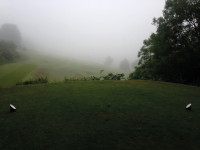
The only practice facility we have is a putting green which is used by our thriving junior section. I am looking at installing a driving net in the future but, unfortunately, we don't have the space for a driving range.
Tell us about your maintenance regimes
The greens are usually cut daily through the summer. Cutting heights during the peak season can range between 3.5mm-4.5mm. I usually hand cut them all summer with our John Deere 220 SL pedestrian mower. I try my best to hand cut as much as possible, as we have small greens. The triple is there if I'm pushed for time.
During dry or stress periods I may relax slightly on cutting, bring the height up to try and not use too much water as it is costly being mains supply. I would like the club to invest in a greens iron so we can do less cutting and put less stress on the plant.
I tend to verticut at the start of season, before topdressing, to remove any moss that has developed over the winter and through the summer when the poa starts seeding. When I took over in late 2014, the greens were very compacted and little aeration had been carried out. Last summer, I was getting a lot of dry patch as water was not getting down through the soil profile. I have carried out various directions of slit tining operations and a deep core using half inch tines, set at a depth of three inches.

I apply two heavy topdressings a year, one in spring and one in autumn, usually after aeration. I would like to increase this through the season, but I have to topdress by hand as I don't have a dresser at present.
The greens are mainly poa based and can be susceptible to disease outbreaks, so I spray fungicides as and when required. I spray wetting agent, iron, Primo Maxx and a liquid feed once a month in between some granular feeds. I am going to introduce seaweed to the mix this year and hopefully this will help with turf stress and root development.
Fairways are maintained at 14mm all season using a John Deere 3235c mower - twice a week in the summer and when required during other times. Fairways are sprayed for weeds as and when required. They are contour striped during the season and 50/50 during winter to save time and minimise turning in softer conditions.
Tees and approaches are cut at 8mm with 8 bladed cylinders on our Toro 3250 triple mower. We 50/50 cut our tees and stripe our approaches. These areas are cut twice a week. They are also sprayed with selective weedkiller annually. They will get one application of a granular fertiliser to help keep them in good shape during the season. The tees are quite small and can take a battering with wear and divots. They are usually divoted when I can spare the time and I have introduced divot mix bins on the par 3s to encourage golfers to help me out.
The rough is cut at 2 inches right across the course with our John Deere 1545 mower. The rough is cut once a week and the heavy growth areas sometimes twice.
I tend to concentrate on the main areas, such as greens and fairways, and I try to keep whatever help I get on board by giving them a variety of jobs from rough cutting to raking bunkers.

Presentation is everything, from straight lines to emptying bins! I was lucky enough to develop a habit of regular hand cutting wherever I have been so far in my career. I hand cut most of the time as I feel this provides a better cut and enhances presentation. Small things, like emptying bins, divoting tees and edging yardage discs all helps in producing good presentation.
What end of season and ongoing renovations do you undertake?
It can be difficult to get started as, these days, the grass grows nearly all year round. Our main competitions finish in September, but I'm still cutting in late November. I aim to do greens renovation in early October; usually hollow coring and topdressing. Other stuff, such as bunker rebuilds, will start in December and finish in early March.
Most projects will consist of using a small digger and a turf cutter (which is borrowed from a local club) to cut from our turf nursery and also lift the surrounds of the bunkers I intend doing. I usually just hire a digger for a day or so and do all the digger work at once to minimise the hire cost. The club know some of the bunkers are not up to the standard we require, so money is available to help with costs. Members try and support social and fundraising events to help with course improvements.
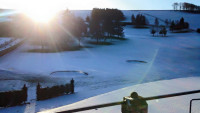
It's been a nightmare this winter, with temperatures in double figures. We have had constant rainfall that has made life difficult trying to do jobs around the course. Fairways and roughs have been growing all winter and it has been frustrating not being able to cut them, as they were so wet and dangerous to cut on the hill. Keeping an eye on disease outbreaks was on my mind all winter, but I was fortunate to get away with just the one application back in late autumn.
How do you interact the your club members?
I used to have a greenkeeper's bulletin board, but I think this is a thing of the past as I feel members don't read notices much. What I have found successful is regular course blogs on our Facebook page. Most of our core members follow our page, and it's great for updates on projects, course closures etc. It saves them a lot of hassle having to phone up on Saturday mornings to check if the medal is on. I usually take my phone on the course whilst I'm checking the conditions and will put it up before the first tee time, which goes out at 8.00am in winter.
Myself and my sub-committee will walk the course two or three times a year to discuss future winter projects and identify where we can make improvements, short and long term.
I always keep the members informed and make them feel involved. It is their club and Cupar Golf Club is known for its community spirit where help is there if it's needed. Regular Facebook blog updates go a long way to keeping them onside.
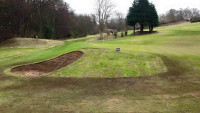
I have recently started a bunker renovation programme. This will be ongoing through the coming winters. Although revetted bunkers are more suited to links courses, the revetted style bunkers suit Cupar as most greens are cut into the side of the hill. We currently have twenty-six bunkers on the course, and I have renovated four this winter. Some bunkers are in a worse state than others, but I am trying to target the worst ones first.
Cupar already has a great reputation for good greens and I'm now trying to improve the quality of our bunkers. I would have liked to have done a couple more this winter, but the wet weather hindered my progress.
Some bunkers need repositioning slightly and some just need to be refaced and sand quality improved. We are quite fortunate to have a large area on the right hand side of our 2nd hole that we can use as a turf nursery. It is renovated by hiring in a rotovator and then prepared for seeding. Most of the bunkers I have done this year have been done by hand, so there has been no cost to the club. I do tend to hire in a mini digger for the bigger projects that require high quantities of soil to be removed.
I also built a new 13th medal tee which was uneven and facing the wrong way. I also cleared out the gorse in the area to improve light and air flow.
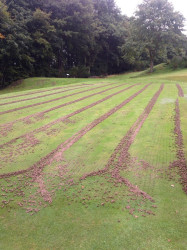
Nothing major really, just the club car park at the clubhouse and the bottom of the road into the club. Jobs we do to these areas are spraying off weeds, litter picking and keeping the areas presentable as much as possible - first impressions are important.
The members help me when I core the greens. Picking up cores on ten greens can be hard going, so I ask the members for help via the Facebook page and a notice in the clubhouse. The members have been great with me and are starting to see the benefits of the improvements I'm making. But building bunkers and earth moving I tend to do myself. Luckily, I enjoy doing it!
What about ongoing training?
I try my best to go to as many greenkeeping seminars held through the BIGGA central section. Being on your own can mean you lose sight on things happening in the world! I am also fortunate to have Elmwood just down the road for any courses I need to do, such as first aid, and any other courses that might be a benefit to me and the club.
How do you undertake pest and weed control?
Moles are the worse problem here at Cupar with the soil being rich in worms, which they love. There's not much I can do except keep on setting the traps. I have been quite successful though, as I have caught over forty moles over the past year. They tend to damage the outer areas of the course, especially in the rough. They do become a problem when you need to cut the rough, so the soil is lifted and traps are set. I mix sand with the mole hills and use it as a divot mix.

Last year, we had a small outbreak of Fusarium in late autumn. I managed to get Chipco applied and this helped. We only spray when we have to as we can't afford the luxury of preventative spraying. Improving the health of the greens is my priority to help minimise disease outbreaks.
We have some rabbits, but they are not completely out of control. I would need to hire in a contractor to deal with them if it got worse.
How important do you consider the local flora and fauna?
It's an area that I simply don't have much time for due to lack of staff and budget restraints. I do try and encourage broom and gorse planting in low maintenance areas to try and break them up a bit. This also helps with course definition and provides shelter for wildlife, although it can also attract rabbits.
I have planted over 200 young pine trees in areas I do not cut in. Again, this will add character to the course.
Wildflower planting, bird boxes and such things as rainwater harvesting are always in the back of my mind, but it comes down to the time available. However, I may revisit this in the future.
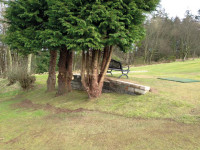
Tighter restrictions, more legislation on chemical usage and, subsequently, less products being available.
How do you balance work with your personal life?
It's important to get the balance right! Being a lone worker can be difficult when arranging holidays during busy times in the summer. I try and make a point of getting some kind of break. We are only human, after all, and not a machine!
What would you consider to be the state of our industry?
My biggest concern is for the game of golf itself. In my opinion, I see a drastic decline in the number of people taking up the game or pulling out for financial reasons - too expensive, bills to pay at home etc. - so they drop the membership. How we address this decline is something we need to look at.
Are we undervalued?
We entered this industry for job satisfaction and not for the money or even having a better social life at times. All I would say is, be professional and conduct yourselves in the way you wish to be viewed.
Thank you for your time.

John Deere 220 SL pedestrian greensmower
John Deere 3235c fairway mower
John Deere 1545 rough mower
Cushman utility vehicle
Toro 3250 triple with greens and tee units
Verticutting units
Stihl chainsaw
Echo pruner
Echo backpack blower
Echo hand-held blower
Stihl brushcutter
Echo brushcutter
A selection of hand tools
"We generally purchase machinery secondhand as that's all we can afford. We have a good relationship with Sandy Armit at Double A in Cupar, who are the local John Deere dealers. They are top class, they are local and getting parts is easy and quick. We recently purchased an ex-demo John Deere 220 SL greens mower, 11-bladed cylinder with full groomer kit, which has helped with poa seeding during the summer, as well as lateral growth. Members have commented on how good the surfaces have been since I have been using it.
I used to be quite open, and kind of still am, but so far I have been impressed with John Deere products and, more importantly, the backup service from Double A. The danger of buying secondhand kit is you don't know much about its history, so you may get breakdowns in the future. So good and quick backup is important in keeping machinery downtime to a minimum.
I tend to hire in Crail Golfing Society's aeration equipment. I am fortunate to get on really well with their Course Manager, Bob Meikle. Bob himself will come up and carry out the aeration for me. Other clubs in the area help me out as much as possible which is great to see and I'm ever so grateful for this.
What would my wish list include? To replace my fairway mower over the next year and perhaps add a topdresser and a TruTurf roller to the fleet."
